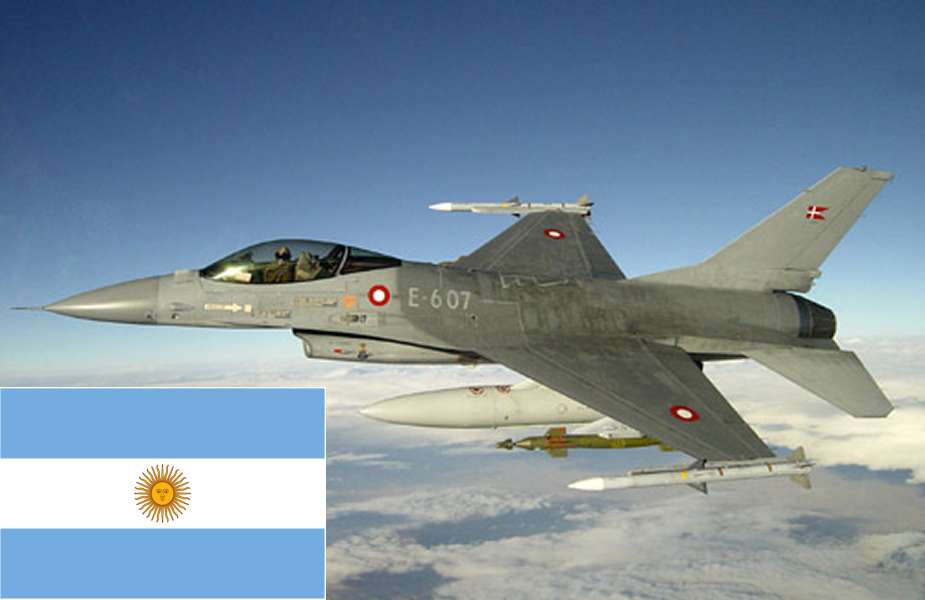The US State Department has authorized the transfer of 38 F-16 fighter jets from Denmark to Argentina. On October 11, 2023, Deputy Assistant Secretary for Regional Security Mira Resnick conveyed the approval to Jorge Argüello, Ambassador of Argentina to the United States. The move is part of Argentina's ongoing efforts to modernize its air force, which currently relies on an aging fleet. of planes.
Follow Air Recognition on Google News at this link
 US State Department has authorized the transfer of 38 F-16 fighter jets from Denmark to Argentina. (Picture source: RDAF )
US State Department has authorized the transfer of 38 F-16 fighter jets from Denmark to Argentina. (Picture source: RDAF )
The authorization for the F-16 includes a comprehensive package of support, equipment, maintenance information, and weaponry. Although no official decision has been announced, the Argentine Air Force has reportedly chosen to purchase these planes. Buenos Aires also signed a Third Party Transfer Document (TPT) with Washington, authorizing the transfer of these used F-16s.
Argentina's options for new fighter jets have been limited by a UK arms embargo, leaving the country to consider alternatives like the Russian-made MiG-29 and MiG-35, the JF-17 of Sino-Pakistani manufacture, and the LCA of Indian manufacture. Tejas. Each option has its own set of capabilities, costs, and geopolitical implications. The F-16, an experienced multi-role fighter, would likely strengthen Argentina's ties with the United States and other Western allies but could be subject to conditions related to its use in conflicts involving British interests.
The timing of the U.S. approval coincides with Argentina's plans to replace its aging fleet of P-3B fighters and patrol aircraft. The Argentine government now faces the decision of whether or not to accept the US offer, a complex choice that has implications for the country's geopolitical position and its relations with major world powers.
The Argentine Ministry of Defense allocated $664 million in September 2021 for the acquisition of 12 new combat aircraft. The decision will have far-reaching implications, affecting Argentina's military capabilities and geopolitical alignments. The choice of aircraft will therefore be a crucial factor in the development of Argentina's national security strategy for the years to come.
Argentina faces a complex set of choices as it seeks to modernize its aging air force. The country's Defense Ministry had allocated $664 million in September 2021 for the acquisition of 12 new combat aircraft. However, options are limited due to a UK arms embargo, which has effectively excluded any aircraft containing British-made parts.
One option is the Russian-built MiG-29 and MiG-35. These planes are known for their agility and versatility, but they have the geopolitical implication of strengthening ties with Russia, a factor that could be viewed unfavorably by Western countries.
Another choice is the JF-17, a light, single-engine, multi-role combat aircraft developed by China and Pakistan. Opting for the JF-17 would be a significant geopolitical move, aligning Argentina more closely with China at a time when the United States seeks to limit Beijing's influence in the region.
Indian-made LCA Tejas is also on the table. It is a single-engine, multirole light fighter, but may also be subject to restrictions due to the presence of British-made parts. Additionally, the Tejas is yet to prove itself in combat scenarios compared to other options.
The US-made F-16 Viper remains a strong contender, especially given the US State Department's recent authorization for the transfer of 38 of these aircraft from Denmark to Argentina. The F-16 is a proven multi-role fighter that is used by many air forces around the world. Choosing the F-16 would likely strengthen Argentina's ties with the United States and other Western allies, but could come with conditions on how the aircraft can be used.
Each of these options carries its own set of capabilities, costs, and potential policy ramifications. The MiG-29 and MiG-35 offer strong air-to-air and ground attack capabilities, but would draw Argentina into Russia's sphere of influence. The JF-17 is a cost-effective solution and offers a wide range of modern capabilities, but helps align Argentina more closely with China. The LCA Tejas offers advanced technology but remains an unproven platform. The F-16 is a reliable and versatile fighter, but it is subject to political conditions, particularly regarding its use in any co.
















